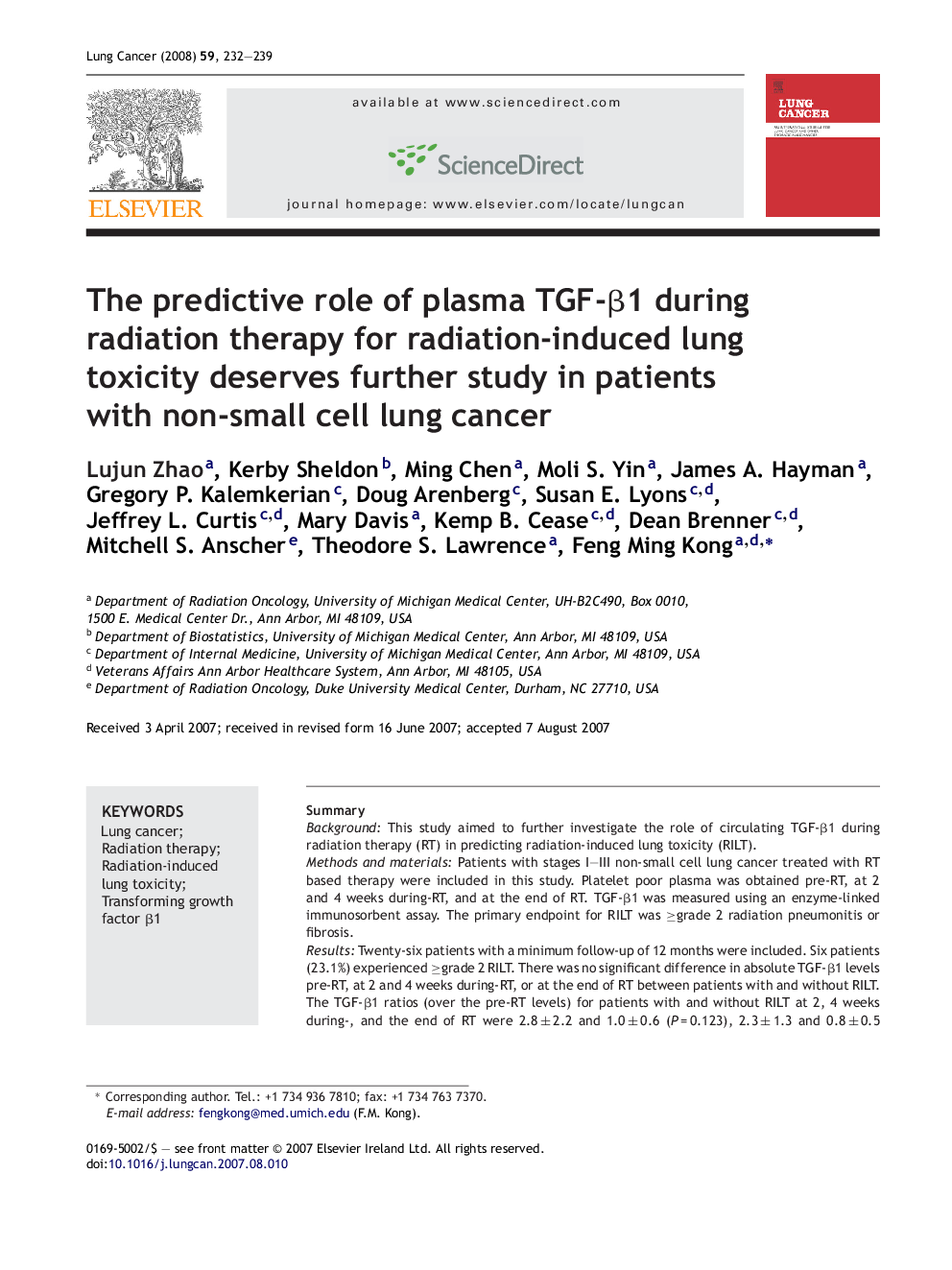| کد مقاله | کد نشریه | سال انتشار | مقاله انگلیسی | نسخه تمام متن |
|---|---|---|---|---|
| 2143725 | 1088356 | 2008 | 8 صفحه PDF | دانلود رایگان |

SummaryBackgroundThis study aimed to further investigate the role of circulating TGF-β1 during radiation therapy (RT) in predicting radiation-induced lung toxicity (RILT).Methods and materialsPatients with stages I–III non-small cell lung cancer treated with RT based therapy were included in this study. Platelet poor plasma was obtained pre-RT, at 2 and 4 weeks during-RT, and at the end of RT. TGF-β1 was measured using an enzyme-linked immunosorbent assay. The primary endpoint for RILT was ≥grade 2 radiation pneumonitis or fibrosis.ResultsTwenty-six patients with a minimum follow-up of 12 months were included. Six patients (23.1%) experienced ≥grade 2 RILT. There was no significant difference in absolute TGF-β1 levels pre-RT, at 2 and 4 weeks during-RT, or at the end of RT between patients with and without RILT. The TGF-β1 ratios (over the pre-RT levels) for patients with and without RILT at 2, 4 weeks during-, and the end of RT were 2.8 ± 2.2 and 1.0 ± 0.6 (P = 0.123), 2.3 ± 1.3 and 0.8 ± 0.5 (P = 0.001), 1.5 ± 0.9 and 0.8 ± 0.5 (P = 0.098), respectively. Using 2.0 as a cut-off, the TGF-β1 ratio at 4 weeks during-RT predicted RILT with a sensitivity and specificity of 66.7% and 95.0%, respectively.
Journal: Lung Cancer - Volume 59, Issue 2, February 2008, Pages 232–239